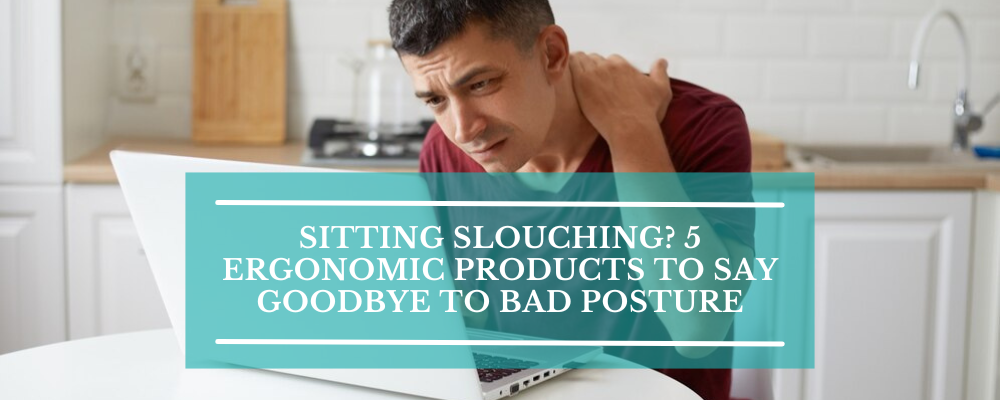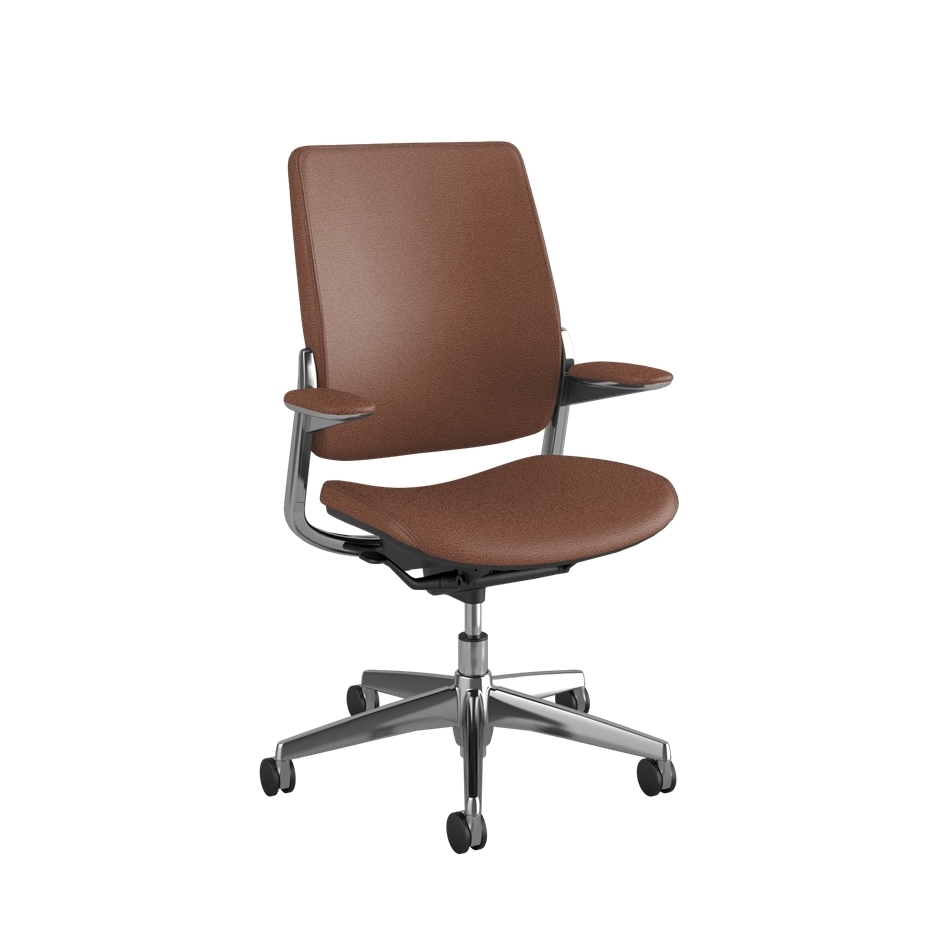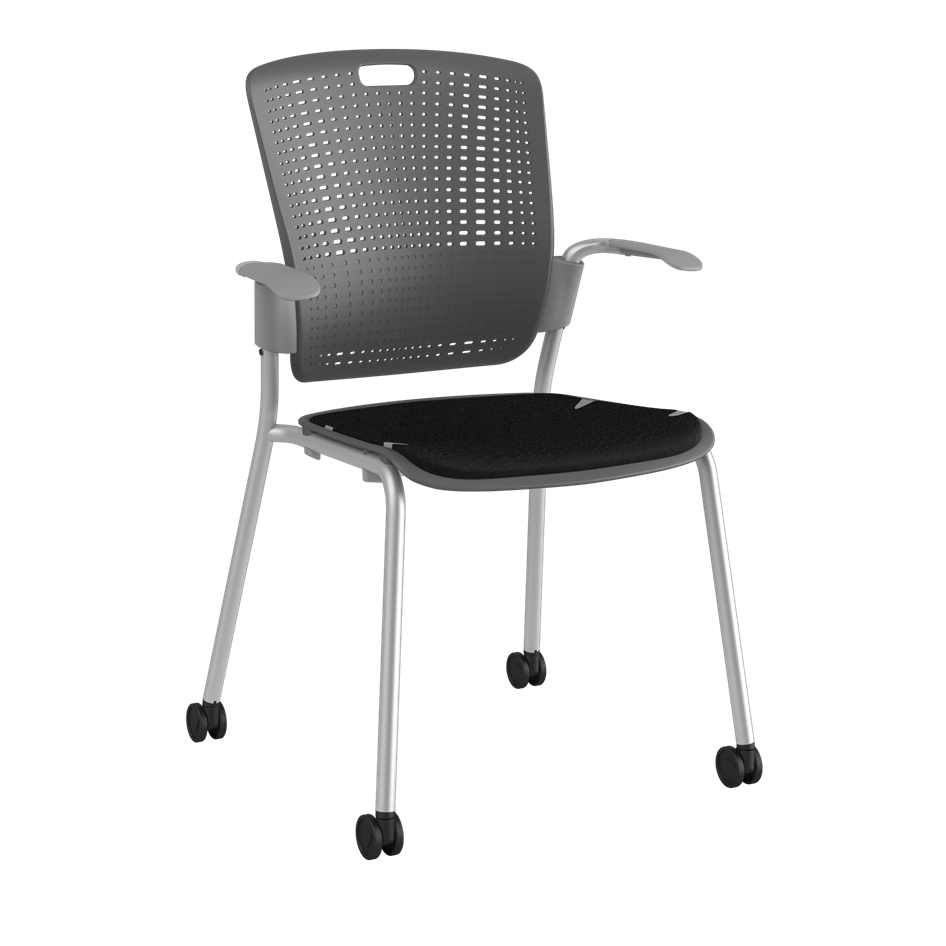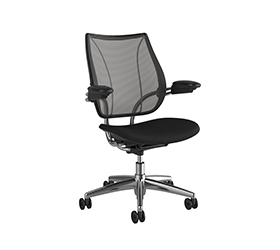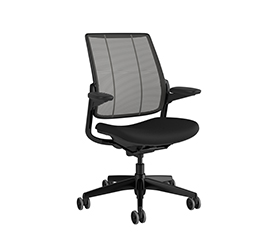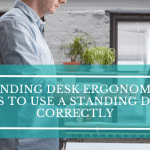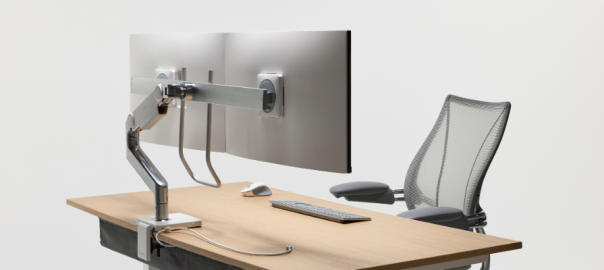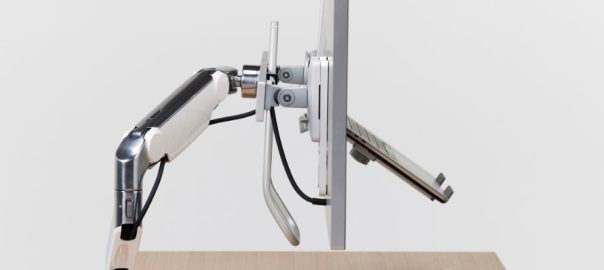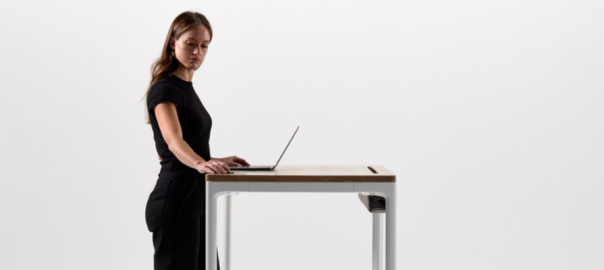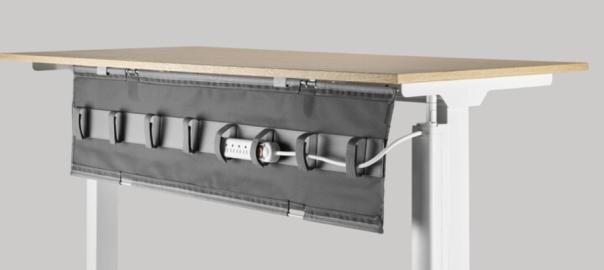A medical study found more than half1 of the office employees suffering from neck, lower back, and shoulder pain. Not only that, but the same study found that bad posture when sitting and incorrect workstation equipment2 cause damage not just to your body but to your career as a whole. The results3 indicated that the effects of poor posture percolate into other areas – resulting in exhaustion during the working day, decreased job satisfaction, hypertension and musculoskeletal disorder symptoms.
This is especially true for those glued to their desks, whether in a traditional office setting or working from home. Regardless of whether you’re hunched over a computer in the office or glued to your laptop at home, those long hours seated can wreak havoc on your posture.
The good news is, there’s a lot you can do to tackle the adverse effects of sitting. From physical pain to mental stress, you can solve your workplace problems by being more mindful of your workstation setup. Incorporating ergonomic products designed to promote proper posture and support your body throughout the workday can make a world of difference.
In this article, we’ll explore five transformative ergonomic products that help improve your sitting posture, no matter where you work. But before we get into them, let’s understand the bad posture consequences.
Effects of Poor Posture When Sitting on Your Well-Being
Sitting for long periods may sometimes cause bad posture4, which can negatively affect general health. Here, you will learn about common signs and symptoms of bad posture and how prolonged sitting could lead to the same problems being even worse. By grasping these aspects, you can take proactive measures toward a good posture that will consequently enhance your life.
Common Signs and Symptoms of Poor Posture
Poor posture while sitting can manifest in various signs and symptoms that indicate an imbalance in the alignment of your spine and body. Some common signs and symptoms of poor posture include:
- Neck and Shoulder Pain: It’s possible that your doctor and elders have told you to be mindful of your posture when working at a desk. Avoid slouching or craning your neck. Such bad posture when sitting causes strain in the muscles and ligaments supporting the neck and shoulders. Bad posture consequences can lead to long-term damage to your body if not corrected5.
- Lower Back Discomfort: Another way to permanently damage your body is by sitting with a curved spine. When your spine loses its natural curve, it puts extra pressure on the lower back, which, in severe cases, can result in irreversible damage, highlighting the seriousness of the long-term effects of bad posture6 .
- Fatigue and Muscle Weakness: Bad posture when sitting can tire out muscles and weaken them, especially those in your back and core areas of your body. This underscores the importance of recognizing the effects of poor posture, as it forces your muscles to work twice as hard to support your body when you fail to sit or stand properly7.
- Headaches: Pain from poor posture isn’t restricted to muscles. Sitting with your head forward for extended periods can trigger tension headaches. This happens when the muscles in your neck get strained, leading to discomfort that can percolate into your head8.
- Restricted Range of Motion: Poor posture can limit your ability to move comfortably and perform daily activities with ease. Investing in ergonomic products such as office chairs or monitor stands can help minimize discomfort and improve flexibility9.
The Impact of Prolonged Sitting on Posture
There may be cases that muscle activity is reduced and your body may be put under stress for several hours due to sitting too long. This can complicate the position of the body. Here’s how:
- Muscle Imbalance: Sitting for extended periods causes certain muscles to become uncomfortably tight and others to weaken, leading to an imbalance that visibly affects one’s posture10.
- Spinal Misalignment: When you force yourself to remain in a static seated position without proper equipment, you experience a gradual decline in your spinal health. Even something as simple as an incorrect workplace setup causes the spine to adopt unnatural curves11.
- Increased Pressure: Prolonged sitting puts excessive pressure on the spinal discs, leading to compression and potential long-term damage12.
- Limited Movement: Extended periods of sitting can result in poor blood circulation throughout the body. When you sit for too long, circulation slows down, causing blood to accumulate in the feet and legs, resulting in reduced blood flow13.
Enhance Your Posture with Ergonomic Solutions
The following are five crucial ergonomic solutions that will help protect you from the ergonomic hazards that come with prolonged sitting.
Ergonomic Chairs
An ergonomic office chair is essential when it comes to correcting bad posture when sitting. These chairs are carefully designed to counteract the effect of poor posture by providing the right support and degree of adjustability.
This includes functions like adjustable lumbar support and customizable seat elevation, helping the chair to provide proper spinal alignment. The benefits of ergonomic chairs extend beyond reducing the effect of poor posture on your body; they also minimize strain and discomfort, thereby mitigating the long-term effects of bad posture. This ensures your well-being in the long run.
Whether it’s an office chair or a saddle chair, investing in ergonomic seating solutions makes your workspace far more comfortable and productive. When paired with other ergonomic products like monitor stands and adjustable keyboard holders, the benefits extend to a positive environment and a proper overall posture.
Standing Desks
Standing desks offer an excellent alternative to regular seated workstations. By offering workforces the option to switch between sitting and standing positions, these desks minimize the consequences of poor posture associated with prolonged sitting. They mitigate the bad posture’s long-term effects, such as muscle stiffness and decreased circulation, as standing promotes movement and blood flow.
Not only posture improvement, but the benefits of standing desks extend to the user’s overall health. Standing while working can reduce the risk of chronic diseases like obesity and cardiovascular issues. Moreover, standing desks help increase energy levels and productivity by combating the lethargy often experienced when sitting for prolonged periods.
Adding a standing desk to your workspace is a step toward building an ergonomic workspace. Whether it’s a standalone desk or an adjustable sit and stand up desk model, they’ll surely help improve not only your work efficiency but also your long-term health.
Footrests and Ankle Supports
Footrests and ankle supports are components of ergonomic seating solutions that significantly help reduce bad posture when sitting. They provide targeted support and alignment to the lower body.
Footrests and ankle supports alleviate pressure on the lower back and legs by elevating the feet and supporting the ankles. They cushion the softer parts of the legs and diminish the bad posture long-term effects associated with prolonged sitting. Plus, they improve blood circulation and reduce the risk of developing varicose veins14.
In addition, footrests and ankle supports in an ergonomic setup provide 360-degree support to the entire body. Whether you’re using an office chair, these accessories provide the right amount of comfort and posture alignment to each vulnerable part.
Keyboard and Mouse Trays
Keyboard and mouse trays play a crucial role in ensuring your comfort during work and preventing bad posture while sitting. These products offer you complete support from top to bottom. They ensure your wrists stay in a natural position, which helps avoid the effect of poor posture, like wrist pain or strain.
These trays work together with your seating to keep you feeling great. Plus, they’re a perfect match for other ergonomic gear like ergonomic monitor stands and adjustable keyboard holders, creating a total ergonomic setup for a safer and more productive work life. By including keyboard and mouse trays in your workplace, you’re taking a smart step towards better posture and avoiding discomfort down the road.
Monitor Arms and Laptop Stands
Monitor arms and laptop stands help you to set up your screen at the right height and angle, reducing the risk of bad posture when sitting. By keeping your screen at eye level, these ergonomic products help prevent the consequences of poor posture, like neck strain and eye discomfort.
As such, you stay comfortable even during long hours of work. With your screen perfectly positioned, you remain focused, taking your overall productivity by notches.
Benefits of Ergonomic Products
Here are some of the benefits of ergonomic products in the workplace:
Seating Solutions
Seating solutions, for instance, ergonomic chairs provide optimal support for the back and pelvis, promoting proper spinal alignment and reducing the risk of bad posture when sitting.
These chairs offer adjustable features like lumbar support and seat height to diminish the consequences of poor posture and prevent bad posture’s long-term effects.
Workspace Accessories
Keyboard and mouse trays promote proper wrist alignment, reducing strain on the upper extremities and preventing bad posture consequences such as Carpal Tunnel Syndrome (CTS)15—a common condition causing pain and numbness.
Monitor arms and laptop stands elevate your screen to an optimal viewing height, reducing the need to hunch over, thus mitigating the consequences of poor posture. This not only improves posture but also reduces eye fatigue and headaches, allowing you to work comfortably for longer periods.
Movement Enhancers
While sitting for long periods is detrimental, alternating between sitting and standing is ideal. Standing desks and sit-stand desks let you switch positions throughout the day, combating the effects of poor posture due to prolonged sitting. By promoting movement and reducing sedentary behavior, these desks alleviate pressure on muscles and the spine and improve blood circulation, thus reducing the consequences of poor posture.
Lower Body Support
Individuals who sit for long periods can benefit greatly from footrests and ankle supports. Keeping your feet elevated and angled slightly helps enhance circulation and reduce strain on your back and legs. This alleviates the bad posture long term effects and promotes proper blood flow.
Overall Workspace Ergonomics
Creating an ergonomic workspace involves optimizing the layout and arrangement of your desk, chair, and equipment to promote comfort and productivity. Consider factors such as desk height, monitor placement, and chair support to minimize strain and enhance overall well-being during work hours.
Read More: Benefits of Ergonomics in the Workplace
Improving Posture While Working: Key Habits to Follow
Here are some critical points on good sitting habits while working:
- Align Your Head: Combat the effects of poor posture by starting from the top. Sit upright with good lumbar support to avoid hunching over your desk and thrusting your head forward. Maintain a neutral head position to prevent bad posture consequences like neck strain, even during breaks.
- Stretch Your Shoulders: Regularly stretching your shoulders helps alleviate the consequences of poor posture. Tightened chest muscles from a hunched desk posture can lead to internal shoulder rotation16. Include shoulder stretches in your daily routine to ensure your muscles feel relaxed, reducing the risk of bad posture long-term effects.
- Look Up: Position your monitor at eye level to reduce the effect of poor posture on your neck. Avoid constantly looking down at your keyboard by improving your typing skills and maintaining proper hip and spine alignment.
- Avoid Slouching: Slouching tightens chest muscles and weakens upper back muscles, leading to spinal curvature issues. Massage and stretch affected muscles regularly.
- Exercise and Stretch: Prevent the adverse effects of poor posture and prolonged sitting by incorporating hip, glute, and hamstring exercises and stretches into your routine. Keep thighs parallel to the floor to prevent hip flexor tightening and maintain proper posture.
- Keep Wrists Flat: Maintain a flat keyboard surface and ensure your wrists are above the keyboard, like playing the piano. This helps reduce strain on the wrists and promotes better typing posture.
- Sit Upright and Move Your Feet: Avoid crossing your legs at your desk to prevent poor circulation and misaligned posture. Maintain an upright sitting position with both feet firmly planted on the floor, and be sure to periodically move your feet to enhance blood circulation.
Read More: What is an Ideal Table and Chair Height and Why it Matters?
Conclusion
Setting up the right workstation and following posture correction guidelines is a win-to-win for both companies and their employees. By promoting proper spinal alignment and reducing muscle strain, workplace ergonomic solutions significantly boost your comfort and well-being throughout the workday. Remember, a healthy and pain-free workforce is a productive workforce.
The benefits of ergonomics are far too many to be ignored, so don’t wait any longer—invest in ergonomic products now!

